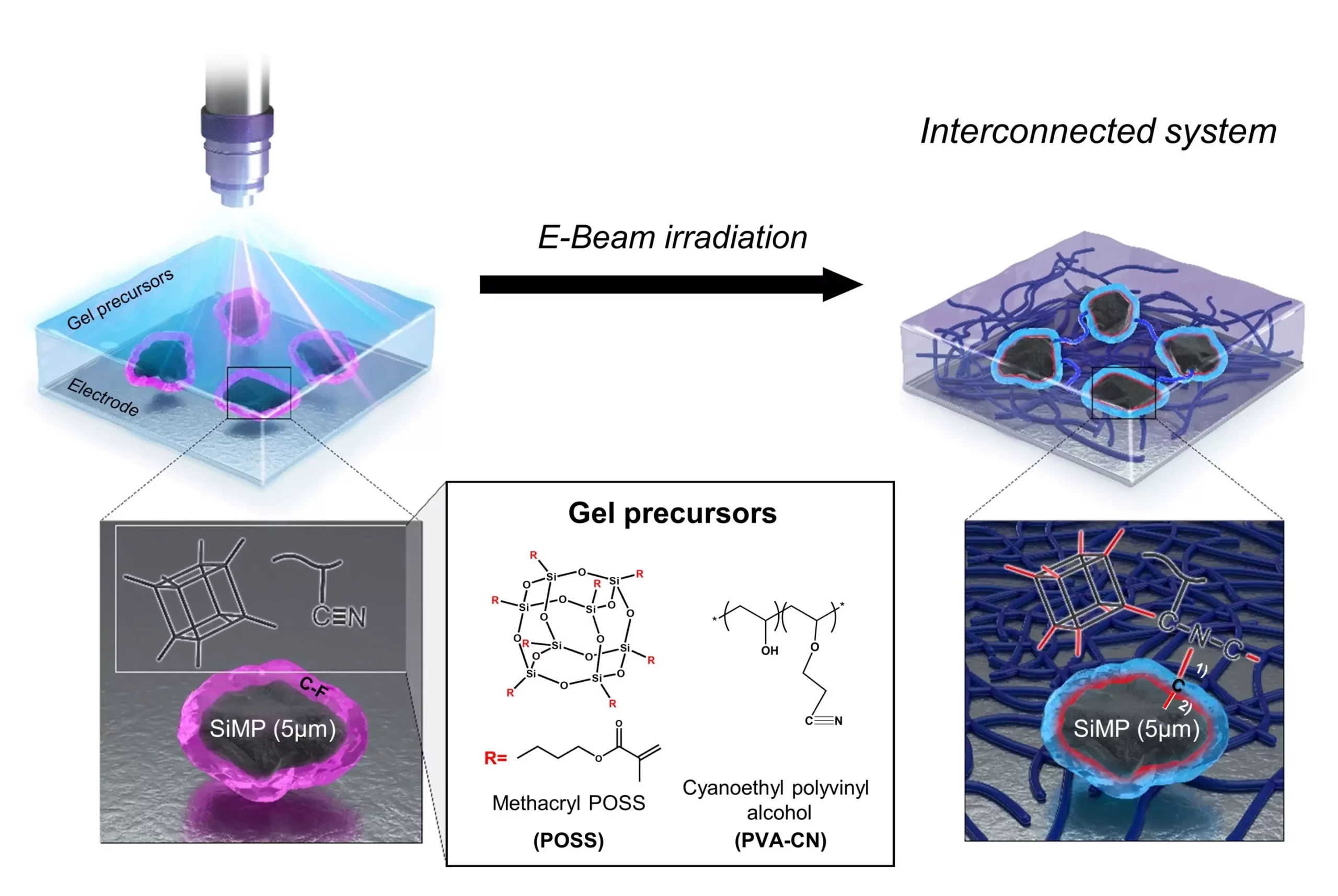The advancement in Artificial Intelligence (AI) and healthcare may have stolen the show at the Consumer Electronics Show (CES) in 2024, but it is battery technology that lies at the heart of these groundbreaking innovations. The focus on battery technology is especially prominent in the realm of electric vehicles (EVs), where researchers are striving for longer battery range and greater power efficiency. While today’s EVs can already travel around 700km on a single charge, the goal is to achieve a battery range of 1,000km. However, this aspiration poses numerous challenges. Enter Professor Soojin Park, Ph.D. candidate Minjun Je, and Dr. Hye Bin Son from the Department of Chemistry at Pohang University of Science and Technology (POSTECH) who have developed a cost-effective and high-energy-density Li-ion battery system using micro silicon particles and gel polymer electrolytes. Their groundbreaking work has been published in the journal Advanced Science.
Silicon, known for its high storage capacity, has great potential as an anode material in lithium-ion batteries for EVs. However, its use in practical applications has remained a puzzle for researchers. One of the main challenges is the expansion and contraction of silicon during charging and discharging, which significantly affects battery efficiency. While utilizing nano-sized silicon particles has partially addressed this issue, the complex and expensive production process undermines its practicality. In contrast, micro-sized silicon particles offer a more cost-effective solution with higher energy density. However, the expansion problem becomes more pronounced with larger silicon particles, limiting their use as an anode material.
To tackle these challenges, the research team at POSTECH employed gel polymer electrolytes to develop an economical and stable silicon-based battery system. Unlike conventional liquid electrolytes, gel electrolytes exist in a solid or gel state, providing better stability. The team used an electron beam to form covalent linkages between micro silicon particles and gel electrolytes. These linkages help disperse internal stress caused by volume expansion during battery operation, ensuring structural stability. The results were remarkable, as the battery demonstrated stable performance even with micro silicon particles that were a hundred times larger compared to traditional nano-silicon anodes.
Apart from the improved stability, the silicon-gel electrolyte system developed by the research team also exhibited similar ion conductivity to batteries that use liquid electrolytes. Additionally, there was an approximate 40% increase in energy density, further emphasizing the potential of this innovation. What sets this battery system apart is its straightforward manufacturing process, making it ready for immediate application. Professor Soojin Park highlighted this aspect, stating, “We used a micro-silicon anode, yet we have a stable battery.”
The development of a cost-effective and high-energy-density Li-ion battery system using micro silicon particles and gel polymer electrolytes opens up new possibilities in the field of battery technology. The potential applications go beyond electric vehicles and can revolutionize various industries, such as portable electronics and renewable energy storage. The ability to address the expansion issue associated with larger silicon particles is a significant breakthrough, paving the way for more efficient and practical battery solutions.
Battery technology is undoubtedly the backbone of futuristic advancements in various fields, and the work carried out by Professor Soojin Park and his team at POSTECH is a testament to the relentless pursuit of unlocking its potential. The application of micro-silicon particles and gel polymer electrolytes offers a cost-effective and stable solution for harnessing the power of silicon in Li-ion batteries. As we continue to push the boundaries of innovation, this breakthrough brings us one step closer to a more sustainable, efficient, and electrified future.


Leave a Reply